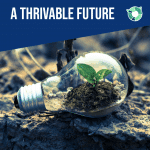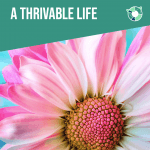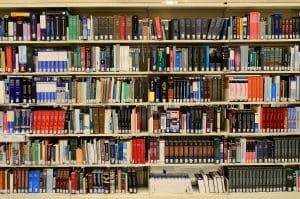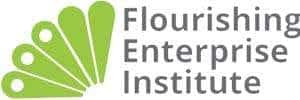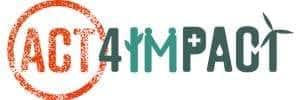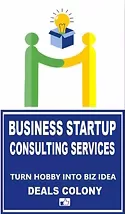A
- Adaptation
- Efforts to reduce vulnerability to the impacts of climate change, such as extreme weather, rising sea levels, and diminishing biodiversity. It involves implementing strategies to make communities, ecosystems, and resources more resilient, mitigating potential damage, and benefiting from any opportunities associated with climate change.
- Afforestation
- The process of creating forests on lands that were previously used for agriculture or are otherwise degraded. The strategy is helpful in restoring ecosystems, reducing soil erosion and air pollution, improving biodiversity, and thereby combating climate change.
Additional resources:
SUSTAINABLE AFFORESTATION: FEASIBLE OR FALLACIOUS?
- Agroecology
- The study and application of ecological principles to agriculture, such as organic farming and permaculture. It creates sustainable farming practices that enhance biodiversity, soil health, and meet the needs of local communities.
Additional resources:
FOOD SYSTEM SOLUTIONS TO FEED A GROWING PLANET
- Anthropocene
- The Anthropocene, or the age of humans, highlights humanity’s transformative impact on Earth’s ecosystems, climate, and geology. It reflects the era in which human activities have exacted a heavy toll on nature and has become the dominant influence shaping the planet’s future.
Additional resources:
THE AGE OF HUMANS AND THE ANTHROPOCENE EPOCH
- Autotrophic Organism
- An autotrophic organism is a living organism that get energy from inorganic substances and stores it. This can be by photosynthesis (using sunlight like green plants and algae) or chemosynthesis (using chemical reactions, like certain bacteria found near volcanic vents).
Additional resources:
THRIVE OUTREACH CLUSTER: BIODIVERSITY FOR A THRIVING PLANET
B
- Battery Energy Storage System (BESS)
- Store electrical energy generated by renewables for later use.
- Biodegradable
- A substance or material that can breakdown naturally and decompose into harmless components through the action of microorganisms, such as bacteria and fungi thereby avoiding pollution. Biodegradable materials are environmentally friendly, as they do not persist in the environment and can return safely to natural ecosystems.
Additional Resources:
SUSTAINABLE SHOPPING HABITS
- Biodiversity
- Biodiversity refers to the variety of life forms in an ecosystem, including animals, plants, fungi, and microorganisms like bacteria, and the genetic information they contain. Each species plays a vital role in maintaining balance, strengthening ecosystem functions and health, and supporting life by providing resources like food, clean water, and shelter.
Additional Resources:
– CELEBRATING THE INTERNATIONAL DAY FOR BIODIVERSITY
– THE EFFECTS OF CLIMATE CHANGE AND – BIODIVERSITY
– THRIVE OUTREACH CLUSTER: BIODIVERSITY FOR A THRIVING PLANET
- Biodiversity Loss
- Biodiversity loss refers to the decline or disappearance of biological diversity, understood as the variety of living things that inhabit the planet, its different levels of biological organisation and their respective genetic variability, as well as the natural patterns present in ecosystems. This reduction in biodiversity can disrupt ecosystem balance and affect the health of natural environments, human societies, and the capacity of the planet to support life.
Additional Resources:
THRIVE OUTREACH CLUSTER: BIODIVERSITY FOR A THRIVING PLANET
- Biofuel
- Biofuels are liquid fuels produced from renewable biological sources, including plants, algae and agricultural waste. When used in transportation and industry, biofuels, like ethanol and biodiesel, produce fewer greenhouse gas emissions as compared with fossil fuels supporting thrivable energy goals.
Additional resources:
BIOFUEL BASICS: WHAT YOU NEED TO KNOW
- Biomass Energy
- It is a renewable energy source harnessed by producing heat and electricity from organic materials like grassy and woody plants, agricultural residues, and animal waste. Biomass energy offers a thrivable alternative to fossil fuels by recycling carbon already in the atmosphere.
Additional resources:
YOUTUBE: CONVERTING BIOMASS TO MICRO-SCALE ENERGY AND BY-PRODUCTS
WASTE FOR ENERGY: THE POWER OF BIOGAS AND BIOMASS
- Biomimicry
- This means learning from and then emulating nature’s forms, processes, and ecosystems to create more thrivable designs. For example, observing natural processes, such as the way plants convert sunlight into energy, designers and engineers develop innovations that support thrivability.
Additional resources:
– BIOMIMICRY: A SCHOOLING FROM NATURE
– NATURE-BASED SOLUTIONS TO CLIMATE CHANGE
- Biosphere
- The biosphere is the part of the Earth that is able to sustain life.
Additional resources:
HOW TO LIVE SUSTAINABLY: LESSONS FROM THE BIOSPHERE 2 EXPERIMENT
- Biota
- Biota is the entire community of living organisms—plants, animals, microorganisms, and more—that inhabit a specific environment or area, whether on land, in the sea, or in the air.
Additional resources:
– MICROBIOLOGICAL SAFETY AND WATER SECURITY.
THE IMPORTANCE OF CONTACT WITH NATURE FOR WELL-BEING
– BIG CATS IN NORTH AMERICA: THE COST OF SMUGGLING ANIMALS
– WILDLIFE PROTECTION AROUND THE WORLD
INVASIVE PLANTS: WE NEED TO WORRY ABOUT THEM
– KEYSTONE SPECIES: HOW THE WOLVES OF YELLOWSTONE CHANGED THE RIVERS
– THE IMPACT OF SCUBA DIVING ON CORAL REEFS.
GREEN SPACES AND COMMUNITY HEALTH – RETURNING TO OUR ROOTS
– SUNSCREEN IS KILLING CORAL REEFS, SO WHAT CAN BE DONE?
- Blackwater
- Blackwater is tainted wastewater that cannot be combined with greywater and must be extracted from a building using separate blackwater pipes.
- Blue Carbon
- It is carbon stored by coastal and marine ecosystems, like mangroves and seagrasses, which absorb CO₂ and help mitigate climate change while also supporting biodiversity and protecting shorelines. It is called “Blue” due to proximity to the ocean; the carbon is stored in the soil and silt and helps absorb carbon dioxide from the atmosphere in its biomass.
Additional resources:
THRIVE OUTREACH CLUSTER: THE IMPORTANCE OF OCEAN GOVERNANCE
- Blue Economy
- A term in economics that refers to the thrivable use of ocean and coastal resources for economic growth, improved livelihoods, and job creation while preserving the health of marine and coastal ecosystems. It includes sectors such as fisheries, renewable energy, tourism, and marine biotechnology.
C
- Carbon Capture and Storage (CCS)
- Carbon Capture and Storage is a process that captures carbon dioxide emissions from industrial activities and power generations, preventing them from entering the atmosphere. The captured CO₂ is then safely transported and securely stored underground in geological formations to mitigate climate change.
Additional resources:
CARBON CAPTURE: WILL IT SAVE US OR END US?
- Carbon Credit
- A carbon credit permits an organisation or a company to emit a certain amount of carbon or other greenhouse gas emissions. Companies can trade carbon credits if they don’t use the credit’s total allowance.
- Carbon Footprint
- The total amount of greenhouse gases, primarily carbon dioxide and methane, emitted by a particular individual, organisation, or product. It accounts for all emissions generated through activities such as energy use, transportation, and consumption of goods and services, contributing to climate change.
Additional resources:
– 6 WAYS TO REDUCE OUR CARBON FOOTPRINT.
– COFFEE PRODUCERS: IS THE CARBON COST TOO HIGH?
Fun task: Carbon calculator
- Carbon Negative
- Being carbon negative means that a person, group, or entity emits less carbon and greenhouse gas than the amount absorbed or offset, which is good for the planet.
- Carbon Offset
- It is a tradable right or certificate that allows individuals, businesses, or governments to compensate for their carbon emissions by funding projects that reduce, absorb, avoid or remove an equivalent amount of greenhouse gases elsewhere. This can involve purchasing credits through carbon trading platforms or supporting activities like reforestation, renewable energy projects, or energy efficiency improvements.
Additional resources:
CAN MARKET-BASED INSTRUMENTS SAVE US?
- Carbon Positive
- The phrase ‘carbon positive’ is misleading. Additionally, it means that a person, group, or entity emits more carbon and greenhouse gas than the amount absorbed or offset, which is problematic.
- Carbon Sequestration
- A decarbonisation technique that captures and stores carbon dioxide (CO₂) from the environment to mitigate climate change. This can occur naturally through forests, soils, and oceans or through technological solutions like carbon capture and storage (CCS) and Direct Air Capture (DAC). By reducing greenhouse gases, carbon sequestration supports a thriving planet for future generations.
Additional resources:
– YOUTUBE: CARBON SINKS | DID YOU KNOW? | THRIVE
– RADICAL WAYS TO ADDRESS THE (GHG) EMISSIONS CHALLENGE THROUGH CARBON SEQUESTRATION
SEE ALSO: Carbon Capture and Storage (CSS)
- Carbon Sink
- A carbon sink is a natural or man-made reservoir for C02. Examples of natural carbon sinks include soils, forests and oceans. Artificial carbon sinks can take the form of high-pressure storage of CO2, deep beneath the Earth’s crust (Alexandrov, 2008).
Additional resources:
DID YOU KNOW? CARBON SINKS
- Carbon Tax
- A carbon tax is a tax on Greenhouse Gas (GHG) emissions imposed by the government on the carbon content of fossil fuels, designed to encourage businesses and individuals to reduce these emissions. Assigning a monetary cost to emissions, promotes cleaner energy choices and helps combat climate change.
Additional resources:
CARBON TAX: DOES IT REALLY WORK?
- Carbon-Neutral
- Becoming carbon-neutral means balancing the output of greenhouse gas emissions with what is able to absorb it, such as carbon sinks.
Additional resources:
CARBON NEUTRAL CITIES: MISSION IMPOSSIBLE?
WHAT YOU NEED TO KNOW ABOUT CARBON-NEUTRAL PRODUCTS
- Circular Economy
- An economic system focused on reusing, recycling, repairing, and refurbishing materials and products to extend their lifecycle, minimising waste and reducing the need for new resources. It impacts all sectors of the economy and aspects of society, aiming to lower pollution, conserve resources, and support the planet’s regenerative cycles.
- Clean Energy
- Clean energy comes from energy that does not emit greenhouse gases when produced.
Additional resources:
– Q & A: AFFORDABLE AND CLEAN ENERGY
– NUCLEAR ENERGY AS A CLEAN ENERGY SOURCE
– CLEAN COAL ENERGY: HOW CLEAN IS IT REALLY?
- Climate Adaptation
- Climate adaptation is the process of adjustment to actual or expected climate and its effects, in order to moderate harm or gain benefits. Human intervention often facilitates adjustment to the expected climate and its effects.
- Climate Change
- Climate change refers to long-term shifts in Earth’s temperature, ecosystems, and weather patterns. These changes are primarily driven by human activities, such as the emission of greenhouse gases from burning fossil fuels, resulting in global warming, rising sea levels, severe climates, shrinking glaciers and ecosystem disruptions.
Additional resources:
– HOW CLIMATE CHANGE AFFECTS COMMUNITIES.
THE EFFECTS OF CLIMATE CHANGE AND BIODIVERSITY
– CLIMATE CHANGE: GLOBAL EVOLUTION AND POSSIBLE IMPACTS
– CLIMATE CHANGE, MODELLING AND IMPACTS.
DO YOU KNOW THESE CLIMATE CHANGE BUZZWORDS?
- Climate Mitigation
- Man-made interventions to reduce emissions or enhance the sinks of greenhouse gases.
- Climate Resilience
- What degree of risk mitigation can a socio-ecological system provide? Evidently, climate resilience investigates how effectively current systems can absorb shocks and continue to function under climate risk, as opposed to thrivability, which aims to increase the number of climate resilient systems.
Additional resources:
CLIMATE CHANGE IN AFRICA: RESILIENCE AND AGRICULTURE
- Closed Loop
- A closed loop is “an automatic control system in which an operation, process, or mechanism is regulated by feedback” (Boulding, 1966).
- Community Development Funds
- These are funds fed back into the community by Fairtrade Certified companies. This enables the people at the extracting end, such as the farmers and workers, to invest in projects that develop necessities in their community such as education, health, clean water, and housing.
- Complex Wicked Problems – THRIVE Framework
- A complex, wicked problem often refers to a social, cultural, political, or economic problem that is impossible to solve. This happens due to incomplete or contradictory information and knowledge, multiple actors, and the people involved. This includes a large economic or financial burden and the intersectionality of these problems with other problems and dimensions. Mammoth challenges ahead of us have deemed climate change as a ‘wicked problem’ (Breuer & Ludeke-Freund, 2017).
Additional resources:
– THE EFFECT OF POPULATION GROWTH RATES ON HUMAN WELL-BEING
- Corporate Social Responsibility (CSR)
- CSR is a self-regulation framework where businesses take accountability for their environmental, social, and economic impacts. It encompasses four key areas: minimising environmental harm, ensuring ethical operations, engaging in philanthropic initiatives, and maintaining financial transparency, fostering trust with stakeholders and society.
Additional resources:
– CORPORATE SOCIAL RESPONSIBILITY EXPLAINED WITH EXAMPLES
– CORPORATE SOCIAL RESPONSIBILITY FOR POVERTY ALLEVIATION
D
- Decarbonisation
- Decarbonisation refers to the reduction of greenhouse gas emissions produced by combustion of fossil fuels by transitioning to cleaner energy sources and thrivable practices. It aims to lower emissions across sectors like energy, transportation, and industry while enhancing carbon absorption, for example through storage in agricultural lands and forests.
Additional resources:
HOW WILL DECARBONISATION TACKLE CLIMATE CHANGE?
- Deforestation
- The practices or processes that refer to the conversion of forest lands for non-forest uses (often commercial purposes). Deforestation is a major contributing factor to the increase in the concentration of carbon dioxide.
Additional resources:
DEFORESTATION: FORESTS FOR HUMAN WELL-BEING
- Desalination
- The process of removing salt and other impurities from seawater to make it suitable for human consumption, irrigation, and other uses. Typically, the process involves methods, like reverse osmosis, to purify water and address water scarcity in arid regions. However, this process produces toxic chemicals harmful to the environment.
Additional resources:
WATER MANAGEMENT: IS DESALINATION THE ANSWER?
E
- E-Waste
- Discarded electrical and electronic devices, such as old phones, computers, televisions, plugs, and cords. These items often contain hazardous or even valuable materials that can be recycled. E-waste should only be disposed of at authorised government sites.
Additional resources:
E-WASTE MANAGEMENT TRENDS AROUND THE WORLD
- Eco-Districts
- A cooperative urban area that focuses on regenerative growth at the neighbourhood level. The community integrates thrivable and thrivable design, renewable energy, waste reduction, and community-driven development to create resilient, environmentally friendly neighbourhoods.
Additional resources:
YOUTUBE: HOW TO CREATE MORE SUSTAINABLE NEIGHBOURHOODS
- Ecosystem
- An ecosystem is a self-sustaining or thriving system that supports living organisms, such as a community of plants, animals and microbes, interacting with each other and their physical environment, including non-living components like energy sources, weather and soil. These interactions create a complex network that maintains balance within natural environments, sustaining life.
Additional resources:
– DID YOU KNOW? SUSTAINABLE ECOSYSTEMS: SELF-SUSTAINING, ADAPTING AND THRIVING
– THRIVABLE ECOSYSTEMS: SELF-SUSTAINING, ADAPTING AND THRIVING
- Ecosystem Service
- Ecosystem services are the diverse and varied benefits that humans receive from the natural environment and healthy ecosystems. These services include the provision of food, clean air, water purification, pollination of crops, climate regulation, and more. The full environmental cost of these services is often overlooked.
Additional resources:
ECOSYSTEMS: THE INTERCONNECTEDNESS OF ALL LIVING THINGS
- Electrochemical
- The term Electrochemical refers to processes where electrical currentsinteract with chemicals to produce energy or reactions, such as in batteries and fuel cells.
Additional resources:
– ELECTROCHEMICAL BATTERIES: A SOLUTION FOR ENERGY WASTAGE?
– ELECTRIC VEHICLE BATTERY TECHNOLOGIES: THE KEY TO TRANSITION
- Embodied Carbon
- Are the Carbon Dioxide (CO₂) emissions used during construction? This includes transportation and production of materials and equipment to and from building sites. In essence, it is the entire carbon footprint of buildings and infrastructure prior to their becoming operational.
Additional resources:
ECO BUILDING: CONCRETE WAYS TO CEMENT NET-ZERO GOALS
- Emissions
- The release of a substance or energy. The primary emissions discussed in thrivability are gases released into the atmosphere. Some of these emissions are greenhouse gases. The most commonly discussed emission is CO2 (Carbon Dioxide), which has significant long-term effects. Plant life is crucial for absorbing CO2 from the atmosphere.
Additional resources:
RADICAL WAYS TO ADDRESS THE GHG EMISSIONS CHALLENGE THROUGH CARBON SEQUESTRATION
- Energy Footprint
- Energy footprints are a subset of environmental footprints that focused on energy consumption.
- Environmental Justice
- Environmental justice means that all communities, regardless of income, race, or location, are treated fairly when it comes to environmental policies, laws and regulations. It also addresses injustice when poor or marginalised communities are harmed by hazardous waste, resource extraction or other land uses from which they do not benefit.
Additional resources:
ANTHROPOCENE AND ENVIRONMENTAL JUSTICE
- Equitable Healthcare
- Equitable healthcare is a system that ensures all individuals, regardless of their socio-economic background, geographic location, or other factors, have equal access to high-quality healthcare. It aims to eliminate disparities and ensure the fair and just provision of resources.
Additional resources:
– YOUTUBE: UNIVERSAL AND EQUITABLE HEALTHCARE FOR ALL? | FEATURING DR. SATISH JEEVANNAVAR
- ESG (Environment, Social & Governance)
- ESG refers to global environmental, social, and governance factors that affect an organisation’s financial performance and decision making. ESG factors help in evaluating investments and how these investments align with making a positive difference in the world. ESG factors are critical to a company’s long-term value to shareholders.
Additional resources:
– LAB-GROWN MEAT AND PLANT-BASED MEAT FOR ESG
– SOCIALLY RESPONSIBLE INVESTING: THE RISE OF ESG
– ESG VS SUSTAINABILITY: THE FACTS
F
- Fairtrade
- Fairtrade represents a global trading partnership that ensures ethical and thrivable practices throughout a product’s life cycle. Fair Trade certifications and labels on products represent safe and decent working conditions, gender equality, fair wages, and environmental protection, while promoting thrivable livelihoods and community development.
Additional resources:
– COFFEE: EXPLOITATION AND INJUSTICE IN YOUR MORNING CUP
– SUSTAINABLE DEVELOPMENT: CLOSING THE GAP IN DEVELOPING NATIONS
- Fast Fashion
- A business model in the clothing industry where garments are produced rapidly and sold at low prices, often mimicking the latest trends. This encourages consumers to buy and discard clothes at an alarming rate leading to waste, overconsumption, and environmental degradation.
Additional resources:
THE ENVIRONMENTAL IMPACT OF FAST FASHION
- Fossil Fuels
- Fossil fuels are energy sources formed over millions of years from the remains of buried plants, animals and organic materials that are transformed under heat and pressure into crude oil, natural gas, or coal. These fuels are non-renewable and are a major contributor to greenhouse gas emissions causing global warming.
Additional resources:
FOSSIL FUEL SUBSIDIES AND CLIMATE CHANGE
G
- Geothermal Energy
- It is a thermal energy derived from heat stored beneath the Earth’s surface. Tapping into natural reservoirs of steam and hot water, it provides a clean and consistent renewable energy source for electricity and heating.
Additional resources:
YOUTUBE: GEOTHERMAL ENERGY: EMPOWERING WOMEN & COMMUNITIES
- Global Warming
- The ongoing global average increase in temperature around the Earth’s surface.
Additional resources:
GLOBAL WARMING: WHAT IS IT AND HOW DO WE STOP IT
- Governance
- The process of governing people, places, or organisations.
Additional resources:
– DESPERATION: THE WORLD’S MOST OVERPOPULATED CITIES
– CLIMATE RISK MANAGEMENT
– SOCIALLY RESPONSIBLE INVESTING: THE RISE OF ESG
– OVERVIEW OF THE SEAFOOD STEWARDSHIP INDEX
– ESG VS SUSTAINABILITY: THE FACTS
– SUSTAINABLE REWARDS FOR GREEN FINANCE
– THE ROLE OF EDUCATION IN ACHIEVING A GREEN ECONOMY
- Green Building
- Buildings or infrastructures designed to minimise environmental impact by using eco-friendly materials, construction practices, and energy-efficient systems. Green buildings improve the thrivability of the environment in which they are located throughout their lifecycle.
Additional resources:
– SUSTAINABLE CITIES NEED SMART CONSTRUCTION MATERIALS
– THE LIVING BUILDINGS CHALLENGE: DRIVING SUSTAINABLE CITIES
– ECO BUILDING: CONCRETE WAYS TO CEMENT NET-ZERO GOALS
- Greenhouse Effect
- The greenhouse effect is a term that describes how the natural gases in the Earth’s atmosphere allow infrared radiation to warm the Earth’s surface, preventing heat from escaping the Earth’s atmosphere. This is contributing to climate change.
- Greenhouse Gases (GHG)
- Greenhouse gases (GHG) are atmospheric gases that absorb heat from the sun and trap it, warming the Earth (The Greenhouse effect). Key examples include carbon dioxide, methane, N2O, CFCs and ozone, primarily emitted through industrial activities, deforestation, and agriculture. These gases contribute to climate change by adding to the natural warming, leading to a phenomenon known as ‘Global Warming’.
Additional resources:
– RADICAL WAYS TO ADDRESS THE GHG EMISSIONS CHALLENGE THROUGH CARBON SEQUESTRATION
– GREENHOUSE GASES. IS IT JUST A LOT OF HOT AIR?
- Greenwashing
- A deceptive practice of claiming environmental friendliness to attract consumers while they may be harmful to the environment. These marketing tactics can undermine genuine thrivability efforts and erode public trust, while projecting a green image.
Additional resources:
– HOW TO SPOT AND STOP GREENWASHING
– ECO-FRIENDLY LABELS: WHAT’S REALLY IN THE PACKAGE?
H
- Health Impact Assessment (HIA)
- A process used to evaluate the health effects of a policy, project, or development plan. It can be conducted, before, during and after implementation. It identifies the risks and benefits to public health, aiming to reduce harm and improve overall health outcomes.
Additional resources:
SUSTAINABILITY AND OCCUPATIONAL HEALTH AND SAFETY RISK
- Hydroelectric Energy
- Energy generated by the kinetic energy of flowing water using turbines that drive generators to produce electricity. It’s a renewable, clean source of power with minimal environmental impact.
Additional resources:
HYDROPOWER’S IMPACT ON WATERWAYS: A SUSTAINABLE CHALLENGE
I
- Inclusive Growth
- Economic progress that delivers social benefits more fairly and equitably across society and communities, including marginalised groups. This growth model emphasises reducing inequality, creating quality jobs, and fostering opportunities for everyone, supporting social equity and improving the standard of living.
Additional resources:
THRIVE OUTREACH CLUSTER: SMART COMMUNITIES FOR A GREENER FUTURE
- Information and Communication Technology (ICT)
- ICT is the devices and connections used to stay connected to others and retrieve information in a digital society. This includes phones, computers, smart devices, and internet connectivity.
Additional resources:
– INNOVATION IN SMART AND SUSTAINABLE INFRASTRUCTURE
– THE EMERGING ROLE OF TECHNOLOGY IN EDUCATION
– WOMEN AND TECHNOLOGY: IS GLOBAL DIGITAL EQUALITY WITHIN REACH?
– WORKING FROM HOME AND STAYING HEALTHY.
– SUSTAINABLE INNOVATIONS IN MEDICAL TECHNOLOGIES
– HOW FIRST WORLD NATIONS USE TECH TO AID DEVELOPING COUNTRIES.
- Internet of Things (IoT)
- Describes the interconnected system of devices and the technology enabling communication among these devices, both with cloud services and amongst each other. This does not describe the devices themselves but refers to the way within which they interact. These “things” are embedded with sensors, software, and connectivity capabilities, allowing them to collect and exchange data with other devices and systems over the internet.
Additional resources:
– SMART ARCHITECTURE AND WELL-BEING
– INNOVATION IN SMART AND SUSTAINABLE INFRASTRUCTURE
– REMOTE SENSING: A SMARTER WAY FOR SUSTAINABLE AGRICULTURE
L
- Land Degradation
- Land degradation is the decline in land quality, often due to human activity, reducing economic productivity of the land and its ability to meet social and ecological objectives.
Additional resources:
THE GALAMSEY MENACE: ILLEGAL MINING IN GHANA
M
- Materiality – THRIVE Framework
- Materiality means what’s significant and relevant. It is the principle that guides organisations in identifying and prioritising non-financial topics that are most relevant and impactful to their operations and stakeholders. Materiality plays a crucial role in sustainability reporting. Sustainability reporting is the disclosure of a much broader set of information than just financial statements (UNEP 2015; Eccles 2012; Lai et al. 2017).
- Mitigation
- Actions taken by governments, businesses, or individuals to reduce the emission of greenhouse gases, decreasing the impact of climate change. This includes transitioning to renewable energy, enhancing energy efficiency, conserving water, and implementing thrivable land-use practices like reforestation, forest conservation and eco-friendly agriculture.
- Multi-Capital – THRIVE Framework
- Multi-Capital is a way of viewing capital beyond the financial. Other kinds of capital can include, but are not limited to: natural, human, social and relationships (McElroy & Thomas 2015; Esbjorn-Hargens 2015).
N
- Natural Capital
- Refers to the planet’s stock of natural resources —including land, air, water, and all living and non-living things essential to the thrivability of life and the economy. Like financial or human capital, natural capital is vital for long-term prosperity, underpinning ecosystems and providing essential services to humanity.
Additional resources:
THRIVE FRAMEWORK: THE MULTICAPITAL APPROACH
- Natural Resources
- These are materials or substances that occur naturally in the environment (and are valuable for the economy), such as coal, gas, oil, wind, forests, fertile land and water. They can be renewable or non-renewable, depending on their ability to replenish over time.
Additional resources:
THRIVE FRAMEWORK: FINITE RESOURCES
- Net Negative
- Net Negative describes a system, or activity with an overall detrimental impact, where the negative effects, such as environmental damage or resource depletion, outweigh any positive contributions. It is also referred to as net loss. We currently operate in a Net Negative state, where human activities cause more harm than regeneration.
Additional resources:
BEYOND SUSTAINABILITY: UNIVERSAL RIGHTS TO THRIVABILITY
- Net Positive
- A system, or activity is considered Net Positive when its positive impacts on the environment outweigh its negative effects. A net positive strategy goes beyond traditional thrivability efforts and actively enhances areas like carbon sequestration or biodiversity. Net positive means that a business must give back more than it takes away from the community.
Additional resources:
WHAT IS THRIVABILITY?
- Net Zero
- Net Zero refers to the balance between the amount of greenhouse gases (GHG) emitted by human activity, and the amount removed over a specific period, achieving carbon neutrality. This involves reducing GHG emissions and implementing strategies like carbon sinks (e.g., reforestation) to absorb excess gases, while using metrics like global warming potential.
Additional resources:
– NET ZERO EMISSIONS: CAN MARKET-BASED INSTRUMENTS SAVE US?
– ECO BUILDING: CONCRETE WAYS TO CEMENT NET-ZERO GOALS
- Net-Zero Water
- The Net-zero water strategy involves a structure or community using only the water that naturally falls on the property.
Additional resources:
NET-ZERO WATER BUILDINGS: HOW THEY CAN SAVE WATER?
- Non-Government Organisation (NGO)
- It is an organisation that is separate from any governing body. NGOs are often run by volunteers and charities.
Additional resources:
What is an NGO?
O
- Ocean Governance
- Ocean Governance involves making laws and policies to ensure the world’s oceans are adequately protected and kept thrivable. It is global and multi-institutional, including governments, public and private companies, along with NGOs and conservation societies.
Additional resources:
– CAN WE SAVE THE GREAT BARRIER REEF?
– STOPPING OVERFISHING IN THE HIGH SEAS: 30% BY 2030
– RETHINKING OUR GLOBAL OCEAN
- Off-Grid
- Being off-grid refers to adopting a lifestyle or system that is not connected to public utilities such as electricity, water, or sewage systems. It often involves using renewable energy sources like solar panels or wind turbines, promoting self-sufficiency and resilience.
Additional resources:
LIVING OFF-GRID
- Operational Carbon
- The quantity of Carbon Dioxide (CO₂) emissions released during the operational or active phase of a building’s lifespan.
Additional resources:
– THE ECONOMIC BENEFITS OF CREATING GREEN CITIES
– THE LIVING BUILDINGS CHALLENGE: DRIVING SUSTAINABLE CITIES
- Organic
- Refers to food produced without the use of synthetic pesticides, herbicides, or fertilisers, and without genetic modification. It focuses on natural farming practices that support biodiversity, soil health, and thrivability.
Additional resources:
SUSTAINABLE AGRICULTURE: A BETTER WAY TO FEED THE WORLD?
P
- Paris Agreement
- The Paris Agreement is a legally binding international treaty on climate change adopted in December 2015 during COP21, under the United Nations Framework Convention on Climate Change (UNFCCC). Its primary goal is to limit the increase in global average temperature to well below 2°C above pre-industrial levels, while striving for 1.5°C, to mitigate risks and protect future generations.
Additional resources:
IS THE PARIS AGREEMENT WORKING?
- Poaching
- The illegal practice of hunting, fishing, capturing, or harvesting of animals, plants, or natural resources, often from forbidden areas or during restricted seasons. Poaching poses a significant threat to endangered species, disrupts ecosystems, and contributes to biodiversity loss.
Additional resources:
– YOUTUBE: WILDLIFE PROTECTION AROUND THE WORLD | DID YOU KNOW?
– WILDLIFE TRAFFICKING: HOW IT AFFECTS COVID19 AND OTHER ZOONOTIC DISEASES
R
- Rain-Water Harvesting
- The process of collecting and storing rainwater from the roof of houses and buildings. This water can be used for household use, irrigation, or industrial purposes, to help conserve freshwater resources.
Additional resources:
Net-Zero Water Buildings: How They Can Save Water
- Recycling
- The practice of gathering and repurposing waste materials is called recycling.
Additional resources:
– RECYCLING SOLAR PANELS: THE NEXT GREAT CHALLENGE
– RECYCLING HUMAN WASTE: SUSTAINABLE SEWAGE
– THE SECRET TO READING RECYCLING LABELS ON PACKAGING
- Remanufacturing
- The rebuilding of a product to restore it to its original manufactured specifications using reused, repaired, and new parts. This practice helps reduce waste, conserve resources, and supports sustainability by giving products a second life.
Additional resources:
YOUTUBE: TOWARDS CIRCULAR ECONOMY: CHALLENGES AND OPPORTUNITIES IN EUROPE | SIMONE GRASSO
- Renewable Energy
- Renewable Energy is any form of energy derived from natural resources, such as sunlight, wind, and hydropower, that are replenished at a higher rate than they are consumed. Unlike fossil fuels, which contribute significantly to greenhouse gas emissions, renewable energy sources are clean, thrivable, and provide a climate-friendly solution by producing little to no emissions.
Additional resources:
– BREAKEVEN RENEWABLE ENERGY
– WHAT IS WIND ENERGY? ADVANTAGES AND DISADVANTAGES
– THE INTERMITTENCY OF RENEWABLES: CHALLENGES AND SOLUTIONS
– IS SOLAR PV THE ENERGY OF THE FUTURE?
- Renewable Energy Certificates
- Are incentives for the production and use of renewable energy. These are certificates that represent the generation of a certain amount of electricity from renewable energy sources.
- Resilience
- The capacity of a community or environment to recover quickly from disruptions. Resilience anticipates, manages, and adapts to the impacts of climate change. It involves building strength and capacity to bear some damage and to better withstand future climate shocks.
S
- Social Determinants of Health (SDH)
- Social determinants of health refer to the conditions in which people are born, grow, live, work, and age, including influencing factors, such as economic stability, education, physical environment, employment, social support, and access to healthcare. These determinants impact health outcomes and contribute to health inequalities.
Additional resources:
WOMEN’S HEALTH ISSUES IN RURAL AREAS: A CAMPAIGN FOR RIGHTS
- Social Equity
- Social equity promotes inclusivity and fairness, fostering a society where all individuals can thrive, regardless of their background or circumstances. It ensures marginalised and disadvantaged communities have equal access to education, healthcare, jobs, and decision-making.
Additional resources:
ACHIEVING THE SDGS: LEAVING NO ONE BEHIND
- Solar Energy
- Refers to the power harnessed from sunlight, capable of producing heat, causing chemical reactions, or generating electricity. This renewable energy source is essential for reducing carbon emissions and supporting a thrivable future.
Additional resources:
IS SOLAR PV THE ENERGY OF THE FUTURE?
- Sustainability
- It is the practice of meeting present needs without permanently depleting or damaging natural resources, ensuring that future generations can meet their own needs. While temporary environmental impacts may occur, sustainability focuses on allowing natural systems to break-even achieving a ‘net zero’ state. It prioritises conservation, minimising long-term negative effects, and maintaining ecosystems at a capacity that ensures their future potential.
- Sustainable Agriculture
- Science-based farming practices that optimise yield meeting current agricultural needs while preserving resources for future generations. Sustainable Agriculture means making the agricultural system more resilient to droughts, floods and other climate change impacts, maintaining soil health, conserving water, and reducing the use of harmful chemicals, while promoting biodiversity and reducing agriculture’s carbon footprint.
- Sustainable Development
- Sustainable development is the economic progress that meets present needs without diminishing the capacity of the eco-systems to meet the needs of the future generations. It aims to balance growth, social equity, and environmental preservation for long-term well-being.
Additional resources:
THRIVE FRAMEWORK: THE SYSTEMIC HOLISTIC MODEL
- Sustainable Development Goals (SDG)
- SDGs are a collection of 17 interlinked global goals adopted by United Nations, that aim to address critical challenges such as poverty, inequality, climate change, and environmental degradation, thereby creating a thrivable future for all living organisms on Earth, while encouraging global cooperation.
Additional resources:
– THRIVE FRAMEWORK: THE SYSTEMIC HOLISTIC MODEL
– United Nations Sustainable Development Goals
– CLIMATE CHANGE AND THE “SDGS”: WHAT ARE THEY AND HOW DO THEY HELP?
– SUSTAINABLE DEVELOPMENT GOALS
T
- The Great Reset
- The WEF describes The Great Reset as “a commitment to jointly and urgently build the foundations of our economic and social system for a more fair, sustainable and resilient future” (2020). The Great Reset has been the subject of conspiracy theories. Additionally, creating a thrivable future with a resilient economy involves changing how we work as people, as places, and as businesses.
Additional resources:
– THE GREAT RESET: WHAT DOES OUR FUTURE LOOK LIKE?
- The THRIVE Platform
- The THRIVE Platform is a unique, first-of-a-kind world-class online modelling platform aimed at informing and guiding humanity towards thrivability. It achieves this by providing context-based performance measures linked to strategy, e.g. business models as informed by the sciences. Using big data analytics and advanced machine learning techniques, it utilises sense-making algorithms to assess performance within norms, relative to thresholds and allocation of available resources.
Additional resources:
– THRIVE PLATFORM WALKTHROUGH
– THRIVE PLATFORM
- The THRIVE Project
- The THRIVE Project is a for-impact social enterprise whose mission is to ensure the long-term well-being and ‘thrivability’ of all humanity. Our vision is a world beyond sustainability, where all life forms live in harmony. Included are the THRIVE Platform, the 12 THRIVE Framework Foundational Focus Factors, and education through publications, blogs, and various kinds of videos. The project is run by volunteers from all around the world and involves partnerships with other sustainable entities.
Additional resources:
– ABOUT THRIVE
– MEET THE THRIVE PROJECT
- Thrivability
- It is the ability to enhance the regenerative power of an ecosystem beyond sustainability or mere survival. Thrivability strives to improve the quality of life by sharing available resources in a more equitable manner for both present and future generations. Going beyond simply maintaining balance, it means that our actions actively improve the regenerative capacity of ecosystems, such as greening deserts or improving the biodiversity of rivers for both present and future generations to come.
Additional resources:
– DID YOU KNOW? THE MEANING OF THRIVABILITY
– WHAT IS THRIVABILITY?
– CONSUMERISM, SUSTAINABILITY AND THRIVABILITY
– THE TRAJECTORY TOWARDS THRIVABILITY
U
- Universal Health Coverage (UHC)
- Universal Health Coverage ensures that everyone has access to the health services they need without financial hardship. It includes quality services for prevention, treatment, rehabilitation, and palliative care, for all people at an affordable price.
Additional resources:
UNIVERSAL HEALTH COVERAGE: BRIDGING THE GAP
- Upcycling
- Upcycling is the creative process of repurposing discarded materials or items into products of higher quality or value, often adding artistic or practical enhancements. Unlike recycling, which simply focuses on reuse, upcycling reduces waste while conserving resources, promoting thrivable practices for a regenerative future.
Additional resources:
WHY THRIFTING IS GOOD FOR THE ENVIRONMENT
W
- Water Scarcity
- Water scarcity happens when there are insufficient freshwater resources to meet the demand of a region. It can be due to lack of natural water availability, inadequate supply infrastructure, unaffordable water costs, or overpopulation. It highlights the urgent need for efficient water management and equitable distribution to support thriving ecosystems and communities.
Additional resources:
– SOLUTIONS FOR DROUGHT: MANAGING WATER SCARCITY
– CLEAN WATER AND SANITATION
– WATER PURIFICATION SYSTEMS: HOW EFFECTIVE ARE THEY?
- Water Security
- Having sustained access to an affordable supply of water, avoiding shortages to meet the needs of drinking, sanitation, and hygiene for people, while maintaining productive economies in agriculture, industry, and energy.
Additional resources:
– TIPS TO SAVE WATER
– 15 TIPS AND TRICKS TO SAVE WATER AT HOME
- World Economic Forum (WEF)
- The World Economic Forum is the International Organisation for Public-Private Cooperation (WEF, n.d.) It is a global institution comprising both public and private enterprises across the globe.
Additional resources:
– WEF: Our Mission
– THE GREAT RESET: WHAT DOES OUR FUTURE LOOK LIKE?
Z
- Zoonoses
- Zoonoses are infectious diseases that can be transmitted from animals to humans or vice versa. These diseases can be caused by bacteria, viruses, parasites, or fungi, such as rabies, plague, and cat scratch disease. Zoonotic diseases often emerge from close contact between animals and humans (e.g., wildlife markets).
Additional resources:
ZOONOTIC DISEASES AND FOOD PRODUCTION: PREVENTING THE NEXT PANDEMIC





